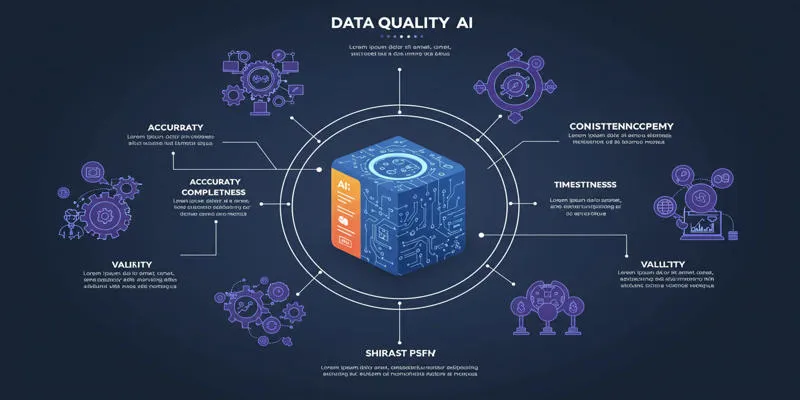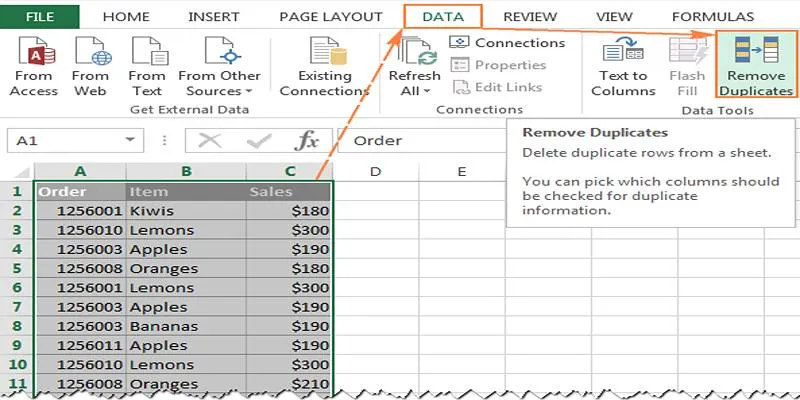Autoregressive models are essential statistical tools for understanding and predicting time series data. They operate by expressing current values in terms of their previous values. In this blog, we’ll explore the theory, applications, and real-world implementations of autoregressive models.
What Is an Autoregressive (AR) Model?
An autoregressive (AR) model is a statistical model used to explain and predict time series data. The core idea is that the current value of a variable depends on its past values. This relationship is expressed through AR models, providing a means to forecast future behavior based on historical observations.
The general form of an autoregressive model is AR(p), where “p” denotes the number of lagged observations (earlier values) in the model. The AR(p) model assumes that the current value of the time series, \( X_t \), can be represented as a linear combination of its previous \( p \) values, an intercept, and an error term. The mathematical formula for an AR(p) model is:
Xt=c+ϕ1Xt−1+ϕ2Xt−2+⋯+ϕpXt−p+ϵt
Key Concepts and Terminology
The AR(p) model relies on core elements such as lagged observations, coefficients, and white noise to capture temporal relationships in a time series. Understanding these elements is crucial for effectively using and interpreting the model.
Lag Order (p)
The lag order, \(p\), represents the number of past observations the model uses to predict the current value. High values of \(p\) can capture more complex patterns, while lower values keep the model simpler. Choosing an appropriate \(p\) is critical to balancing accuracy and avoiding underfitting or overfitting.
Coefficients (\( \phi \))
The coefficients, \( \phi_1, \phi_2, \dots, \phi_p \), indicate the impact of each lagged term on the current term. A positive coefficient suggests a direct relationship, while a negative coefficient indicates an inverse relationship. Correct estimation of the coefficients ensures the model accurately describes the data behavior.
White Noise (\( \epsilon_t \))
White noise, \( \epsilon_t \), refers to random fluctuations or non- observable determinants of the series. It has a zero mean and constant variance. Proper modeling of \( \epsilon_t \) ensures that residuals are random and uncorrelated, validating the AR model.
Stationarity
Stationarity is a crucial assumption in AR models, ensuring that the statistical characteristics of the series remain constant over time. A stationary series has a constant mean and variance, simplifying analysis and modeling. Techniques like differencing or detrending can achieve stationarity if the original data does not meet this requirement.
Selection of the Order (\(p\))

Choosing the correct lag order (\(p\)) is vital for developing an efficient AR model. The lag order specifies the number of previous observations that affect the current value of the series. An incorrect selection of \(p\) can lead to underfitting or overfitting, impacting the model’s accuracy and predictability.
Use of ACF and PACF
The Autocorrelation Function (ACF) and Partial Autocorrelation Function (PACF) are essential diagnostics for determining the correct lag order. The ACF measures the correlation between the series and its lagged observations, while the PACF identifies the correlation of a lag after removing the effects of intermediate lags. A sudden cutoff in the PACF plot can suggest the probable order of the AR model.
Criteria such as AIC and BIC
Statistical criteria like the Akaike Information Criterion (AIC) and Bayesian Information Criterion (BIC) provide further guidance in choosing \(p\). Both criteria balance model fit against complexity, penalizing the addition of too many lags. Smaller AIC and BIC values indicate better model performance. By comparing models with different lag orders and their AIC and BIC values, you can determine the best lag order that effectively captures the time series behavior without over-parameterization.
Estimation of Parameters
Several techniques are available for estimating the AR model coefficients. Some commonly used methods include:
Least Squares
Least squares estimation involves minimizing the sum of squared residuals between observed and predicted values. It is a simple and computationally efficient method widely used for parameter estimation. However, for higher- order AR models or when dealing with missing data, more advanced methods may be required.
Yule-Walker Equations
Yule-Walker equations provide another method of parameter estimation based on the autocovariance structure of the series. This method involves solving a system of linear equations derived from the theoretical autocorrelation function. The Yule-Walker method is particularly suitable for stationary processes and is commonly used due to its mathematical simplicity and precision.
Model Assumptions

To effectively use an Autoregressive (AR) model, ensure these assumptions are met:
- Linearity : Data dynamics are captured as a weighted sum of past values.
- Stationarity : Mean, variance, and autocovariance remain constant over time for reliable forecasts.
- No Autocorrelation in Residuals : Residuals should show no patterns for unbiased estimates.
- Normally Distributed Residuals : Needed in some cases for inference and hypothesis testing.
Advantages of AR Models
AR models offer several notable benefits, making them useful for time series analysis and forecasting:
- Simplicity : Easy to implement and interpret, requiring minimal computational resources.
- Effectiveness : Performs well with datasets exhibiting strong autocorrelations.
- Predictive Accuracy : Capable of generating reliable short-term forecasts.
- Flexibility : Can be adapted for different time series processes by adjusting the model order.
Limitations of AR Models
While AR models are powerful tools for time series forecasting, they come with certain limitations:
- Stationarity Requirement : AR models assume the data is stationary, which may necessitate preprocessing steps.
- Limited to Linear Relationships : They cannot capture non-linear patterns in the data.
- Dependency on Model Order : Choosing an appropriate lag order can be challenging and impacts model performance.
- Sensitive to Outliers : Outliers in the data can adversely affect the model’s accuracy.
Conclusion
Autoregressive (AR) models are powerful tools for time series analysis, offering simplicity and efficiency in capturing linear dependencies within data. However, their effectiveness relies on meeting the stationarity assumption, appropriately selecting the lag order, and ensuring data free of significant outliers. While they excel at modeling linear patterns, they may require alternative approaches for non-linear complexities.
 zfn9
zfn9




















